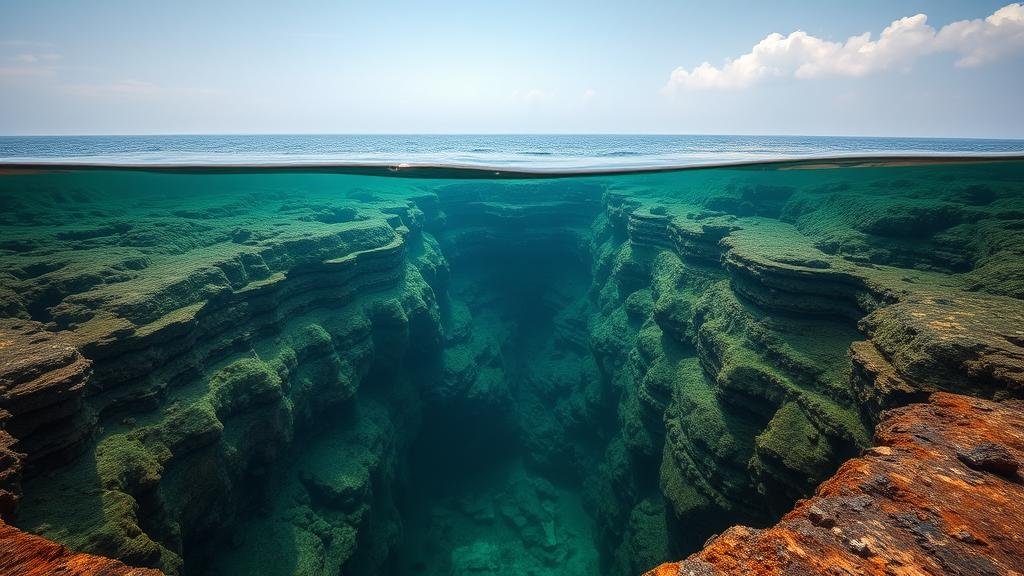Documenting the unexplored depths of ancient marine trenches.
Documenting the Unexplored Depths of Ancient Marine Trenches
The ocean, covering over 70% of our planet, remains one of the last frontiers of exploration, with its deepest regions largely uncharted. Among these depths lie ancient marine trenches, which offer a glimpse into the Earth’s geological history and the evolution of life itself. Documenting these unexplored depths not only reveals fascinating biological diversity but also informs our understanding of geological processes and the impacts of climate change.
The Significance of Marine Trenches
Marine trenches are the deepest parts of the ocean, often reaching depths of over 10,000 meters. Mariana Trench, the deepest known point in Earths oceans, is located in the western Pacific Ocean and reaches around 10,994 meters (36,070 feet). Trenches are formed at convergent plate boundaries where one tectonic plate is forced under another in a process known as subduction. This geological activity results in unique ecosystems and significant biodiversity.
Historical Exploration and Recent Advances
The exploration of marine trenches dates back to the early 20th century. In 1960, the bathyscaphe Trieste descended to the bottom of the Mariana Trench, manned by Jacques Piccard and Don Walsh. This landmark expedition marked a pivotal moment in marine exploration. But, while technology has progressed significantly, many trenches remain largely unexplored due to the immense pressures and extreme environments.
Technological advancements in autonomous underwater vehicles (AUVs) and remotely operated vehicles (ROVs) have opened new avenues for exploration. For example, the Schmidt Ocean Institutes ROV SuBastian has been instrumental in mapping the seafloor and documenting species in previously uncharted areas of the ocean, contributing to our understanding of biodiversity at extreme depths.
Biodiversity in the Depths
Contrary to previous assumptions, marine trenches support unique ecosystems teeming with life. Organisms such as the amphipod Halicephalobus found at the bottom of the Mariana Trench demonstrate remarkable adaptations to extreme conditions, including high pressure and low temperatures. These creatures not only offer insights into evolutionary biology but also have potential applications in biotechnology, such as enzyme adaptations for industrial processes.
- Microbial life: Microbes found in trenches can survive in extreme conditions and play critical roles in nutrient cycling.
- Specialized fauna: Species like giant tube worms and deep-sea squid exploit chemosynthetic processes, showcasing alternative food web structures.
Geological Importance
Ancient marine trenches serve as vital records of Earth’s geological history. study of sediment cores extracted from trench floors can provide data on historical climate events, tectonic activity, and even the evolution of marine life. For example, research published in the journal Nature suggests that sedimentary records from marine trenches may hold clues about past mass extinction events, including their causes and impacts on global biodiversity.
Impacts of Climate Change
Understanding marine trenches has implications beyond historical geology; they are also crucial in comprehending current changes in our environment. For example, studies indicate that deep-sea ecosystems are vulnerable to the impacts of climate change, such as ocean acidification and rising temperatures. By monitoring these trenches, scientists can gather essential data that could inform conservation efforts and climate response strategies.
Future Exploration and Conservation Efforts
As we continue to uncover the mysteries of ancient marine trenches, it is imperative to prioritize conservation efforts. The United Nations’ Decade of Ocean Science for Sustainable Development (2021-2030) aims to promote ocean research, protection, and sustainable use. Engaging with local communities, policymakers, and scientists is essential to safeguard these vulnerable ecosystems while promoting sustainable exploration.
Also, investing in research infrastructure can enhance our ability to conduct deep-sea exploration safely and effectively. Public and private partnerships may be instrumental in developing innovative technologies that facilitate further study of these untouched ecosystems.
Conclusion: The Call to Action
Documenting the unexplored depths of ancient marine trenches is not merely an academic pursuit; it has profound implications for conservation, biodiversity, and climate science. As we harness advanced technologies for marine exploration, we must also embrace our responsibility to protect these fragile ecosystems. In doing so, we ensure that future generations inherit a more profound understanding and appreciation of our planets oceans.



